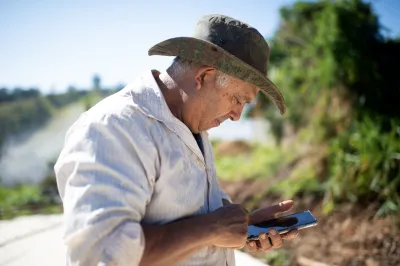My Mobile, My Neighbor and $20: A Dispatch from the U.S.
For all the talk about financial services over mobile technology and our aspirations for a cashless society, it is striking to me how far the economies in the US and Europe still have to go. This blog tends to focus on mobile financial services in the developing world. But I still marvel around the 1st of every month when I have to write a check to my landlord to pay my rent; or when I have to go to the ATM to get $20 to contribute to an office group gift. Shouldn’t we be beyond this by now?
Simon Rockman at the GSMA Mobile Money Exchange had an interesting blog post on this topic a couple weeks ago. He discussed the fact that unlike many other mobile innovations, mobile money transfers between people have begun to take off in the developing world, while they lag far behind in the developed world.
This is a topic that we also wrote about here at CGAP a couple years ago. In Going Cashless at the Point of Sale: Hits and Misses in Developed Countries, Ignacio Mas and I tried to understand if there were lessons we could take from developed world initiatives like Mondex, Mobipay and Simpay that attempted to launch electronic money schemes. Our conclusion was that the debit card had won the battle over many of these initiatives in Europe and Asia. The value proposition that the mobile device offers just isn’t attractive enough when it is just as easy to reach into my pocket for my debit card as it is for my phone.
But a debit card does not solve the problem of transferring money to my colleague sitting next to me at lunch without first converting to cash. Frankly, it’d be much easier for me to send 1,500 Kenya Shillings (about $20US) to my colleague if we were both sitting in Nairobi right now (or Manila or Delhi or Dar es Salaam or Phnom Penh … you get the idea), than it is for me to send $20 to him sitting in Washington.
Rockman thinks that perhaps as more immigrants start using services like M-PESA, GCash and Zap in places like the UK and the US to send international remittances back home, it will spark the use of mobile money in developed world communities. This may do the trick. The New York Times had a recent article about companies that are developing small credit card scanners that plug into a cell phone to enable P2P payments. It argues that mobile money transfer services in the developed world have to incorporate the credit/debit card infrastructure that’s already in place if it is to be widely adopted.
While these types of mobile credit card scanners may be very useful for small merchants, I think they would be quite onerous for the average person to carry around. Hopefully with time, more services will become available that make it as easy as bumping two iPhones together to make a transfer. But I think Rockman is right that we’ll be depending on the developing world to show us how it’s done.
-Sarah Rotman




Add new comment